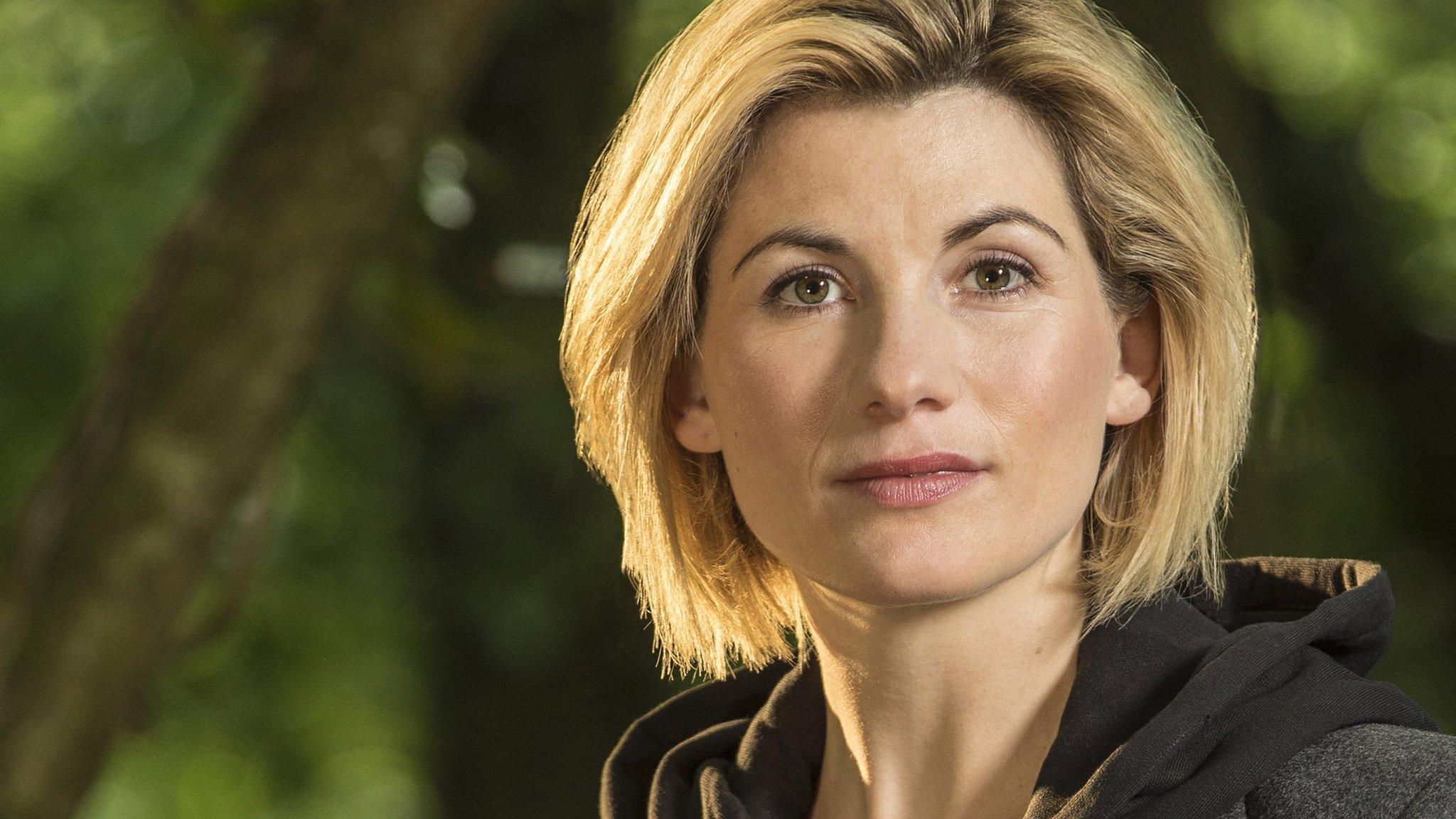Blue Planet II: What's happening in week three?
- Published
Take a quick look at the next episode
Last week, it went down to the deepest depths of the ocean. This week, Blue Planet II explores coral reefs.
Did you know?
Corals are not actually plants. They are in fact animals, which are closely related to jellyfish and anemones.
Bustling with a variety of life and bursting with colour, coral reefs are home to one in every four marine species - even though they cover just 0.1% of the ocean's surface area.
As always, viewers will see some of the amazing animals which call the reef their home.
The team which filmed this episode spent 250 days at sea and 1,500 hours diving underwater in order to capture life on the coral reef.
So what exactly is in store this week?

An impatient turtle heading to the spa
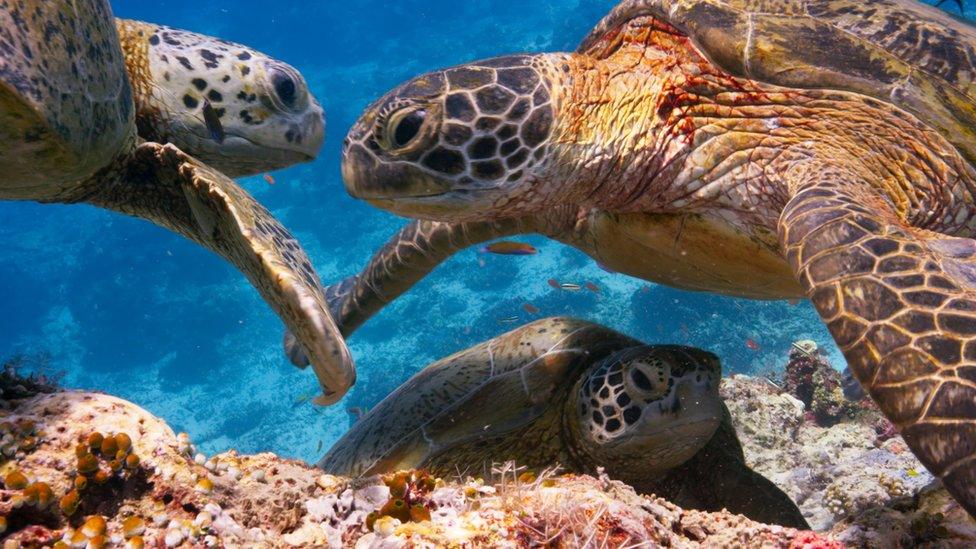
Here we can see green turtles jostling for their spot at a cleaning station
This episode will feature a green turtle making a visit to part of the reef which she uses a little bit like a health spa.
But she doesn't want to queue! And the male turtles are queue-jumping.
So she must trick her neighbours somehow in order to get cleaned quicker.
How will she do it? You'll have to wait until Sunday at 8pm to see.

Fish that use sign language
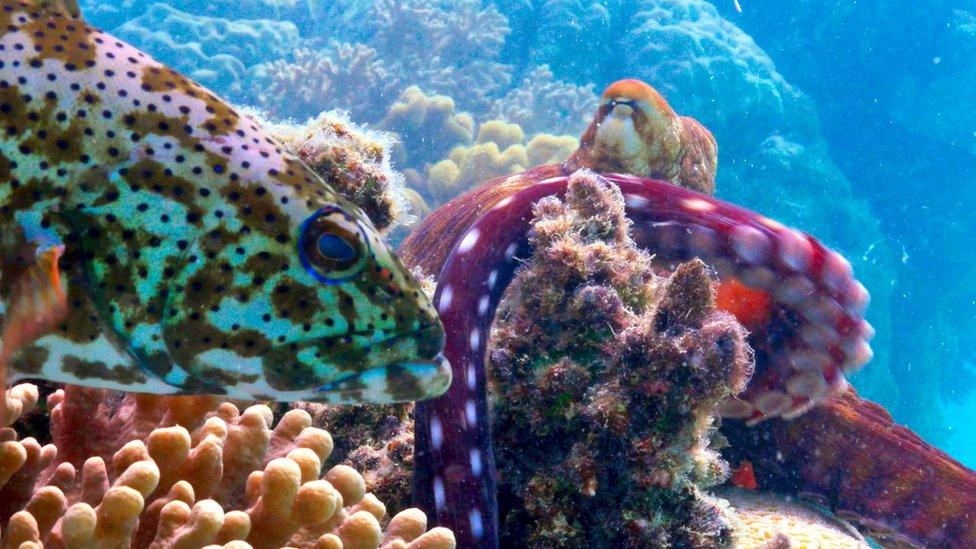
In this episode, you will see how one species of fish uses sign language to talk to a reef octopus
Grouper fish are some of the most common inhabitants on the coral reef.
But they're quite big, so they can't fit in some of the nooks and crannies where the small fish are hiding which they need to eat.
Did you know?
Corals can live up to several thousand years.
In order to get their prey to come out of these holes, grouper fish get help from a reef octopus - which can manoeuvre in these small spaces - by using sign language to tell the octopus where the fish is hiding. Who knew a fish and an octopus could talk to each other?!
While you might not have thought that fish are particularly intelligent, research from over the last ten years has shown that the behaviour of grouper fish is so clever that some aspects of their intelligence might be similar to that of chimpanzees!

Sir David Attenborough's favourite fish
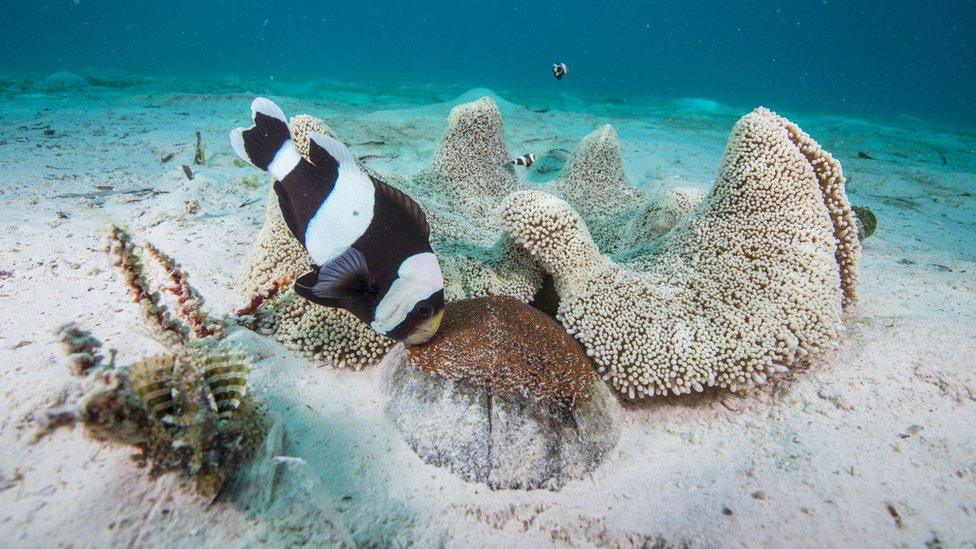
A clownfish pushes objects as much as 10 times its own weight to its anemone
Recently, Newsround asked Blue Planet II presenter Sir David Attenborough which was his favourite animal in the new series - and he told us it was the clownfish.
And viewers will get to see them on Sunday!
In fact, when the team was filming this episode, they did their longest dive to film these fish laying their eggs, spending a whopping four hours and 20 minutes underwater.
You will see how these amazing little creatures are able to push large objects - which are sometimes up to 10 times their own weight! - up to two metres to their anemone nests.

Dolphins at play
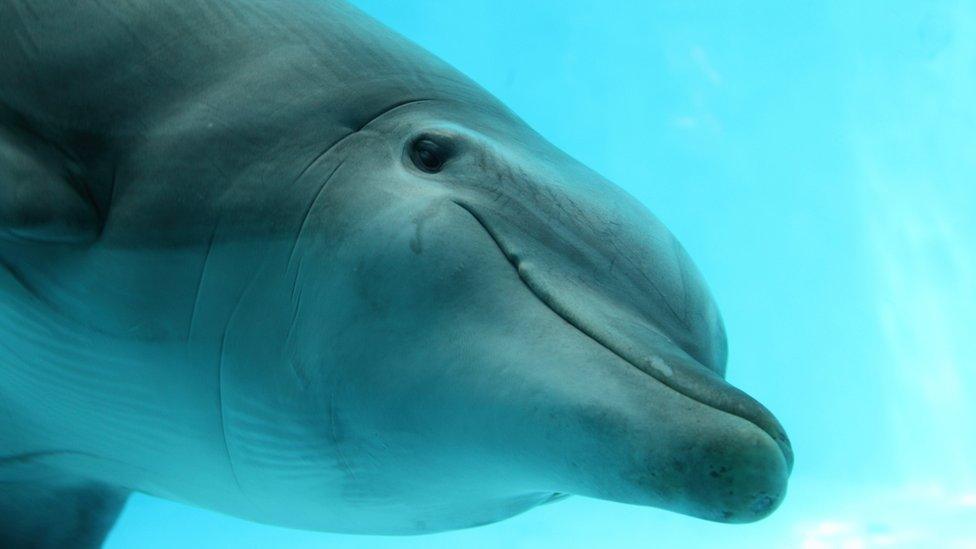
The most famous coral reef in the world is the Great Barrier Reef in Australia - but it is not the only one.
There are corals elsewhere - for example, in the shallows of the Red Sea in Egypt.
Here, the reef provides a place for bottlenose dolphins to come to rest.
But the young ones don't want to rest - they want to play! By balancing corals and sponges on their nose, they turn the reef into their very own playground.

Hope for the world's reefs
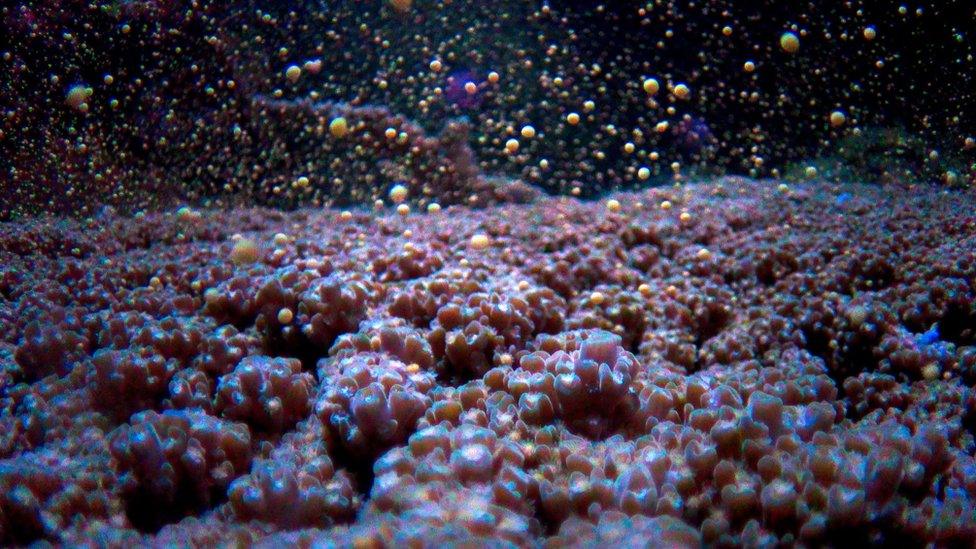
Once a year, in response to the cycle of the moon and the temperature of the water, corals spawn which is what gives life to new corals
Here at Newsround, we have told you about the devastating effects of coral bleaching.
The world's coral reefs are more under threat now than ever before.
But this episode shows us how there is hope.
In the programme, you will see one of the greatest spawning events in the oceans, where corals, fish and invertebrates release a snowstorm of eggs during just one night - marking the start of the next generation.
- Published27 October 2017

- Published30 October 2017
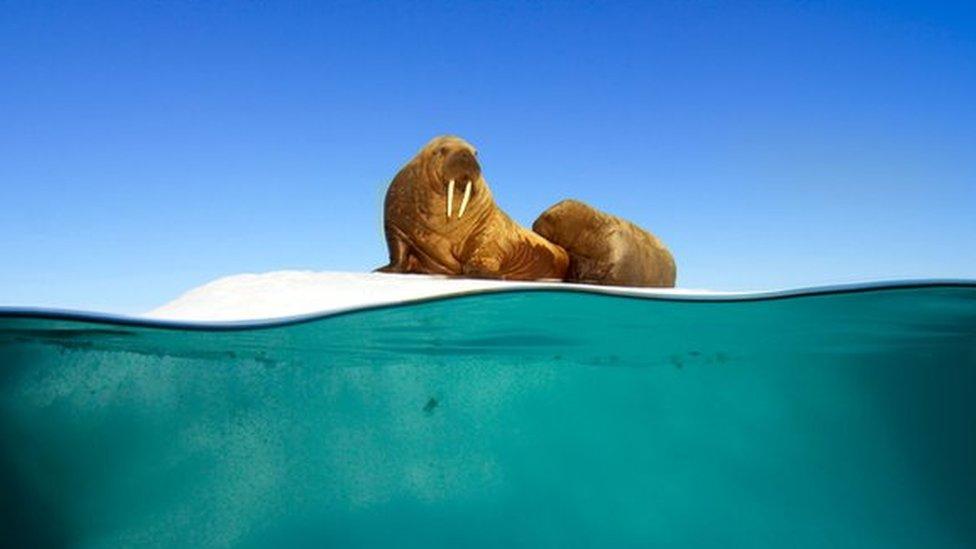
- Published9 November 2017
